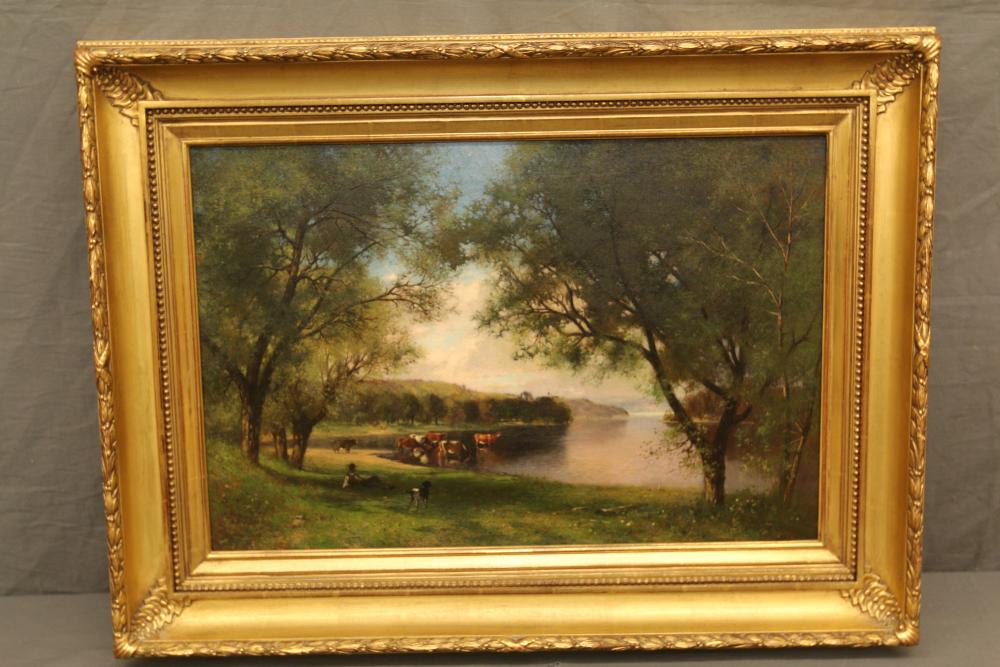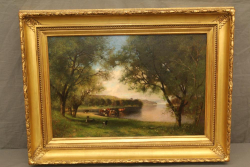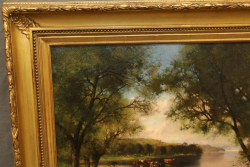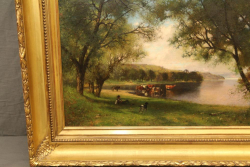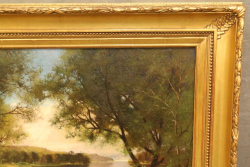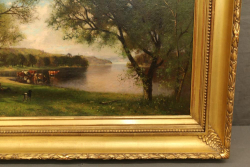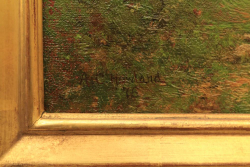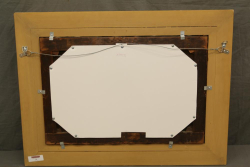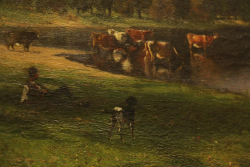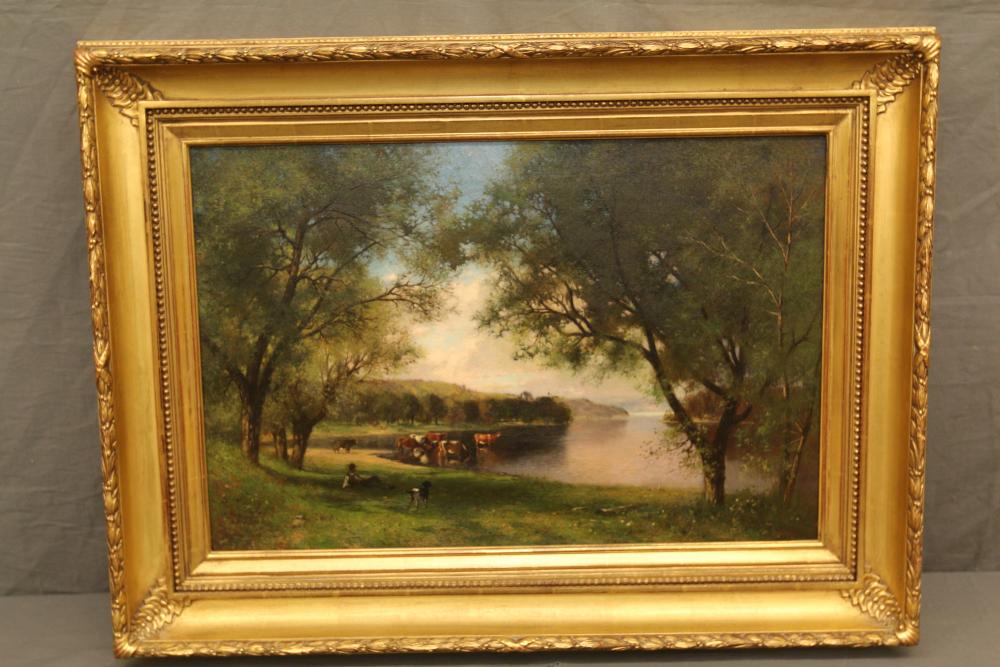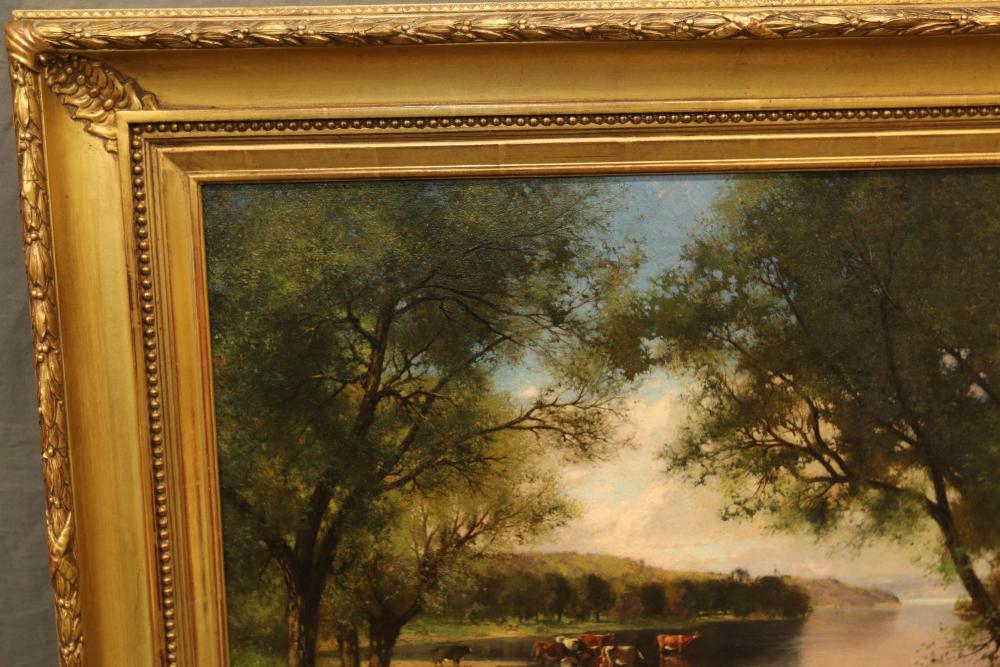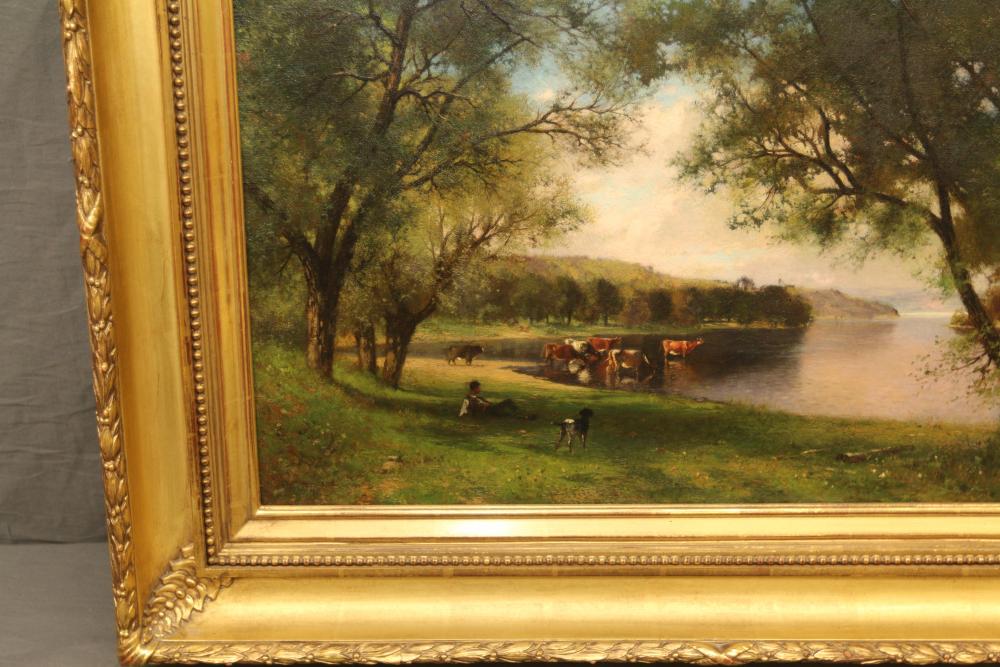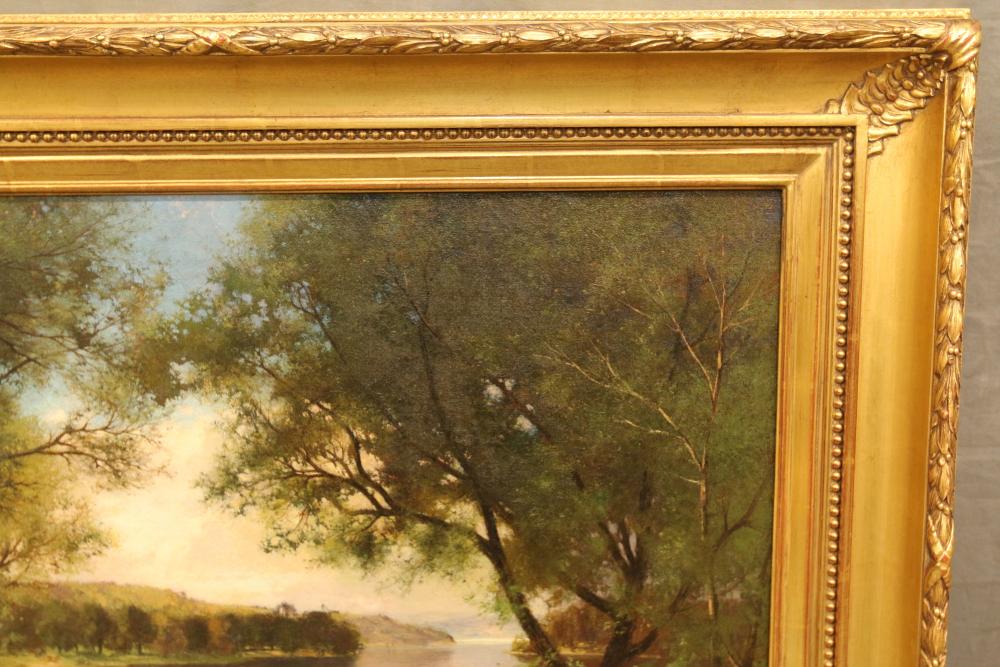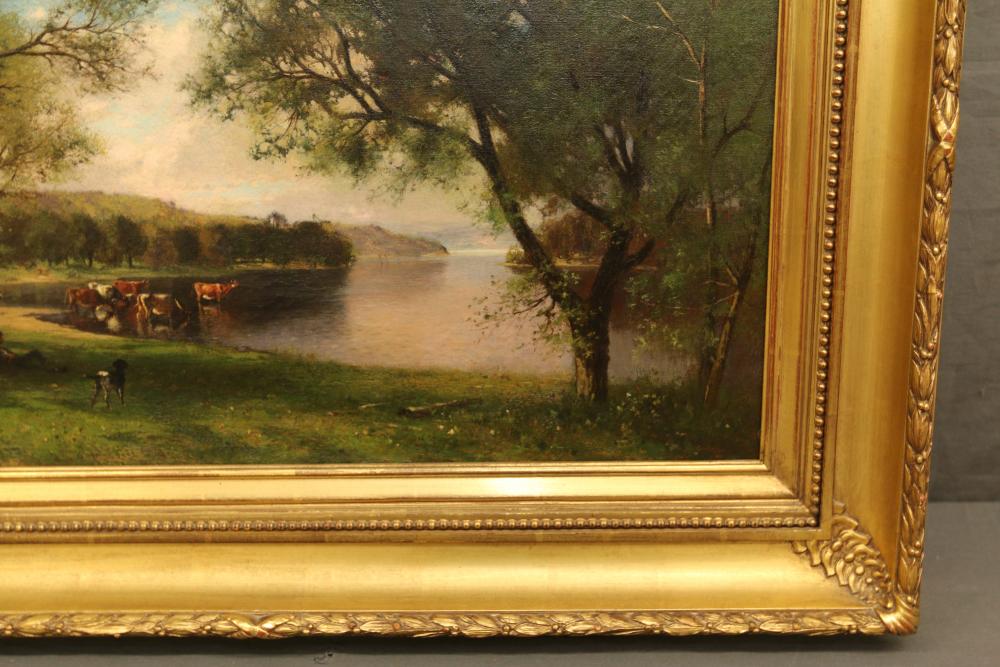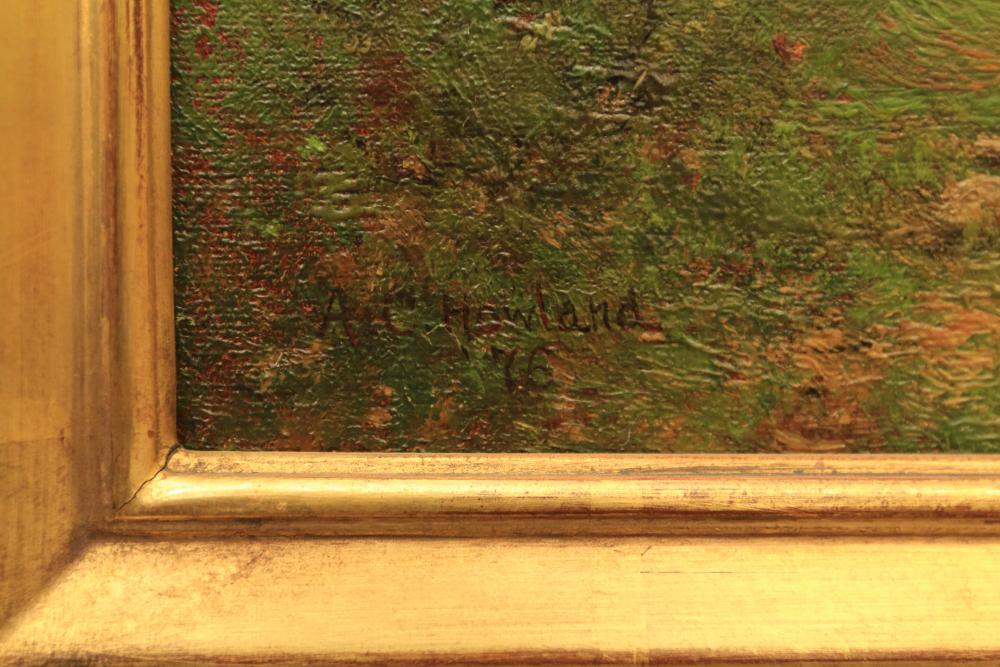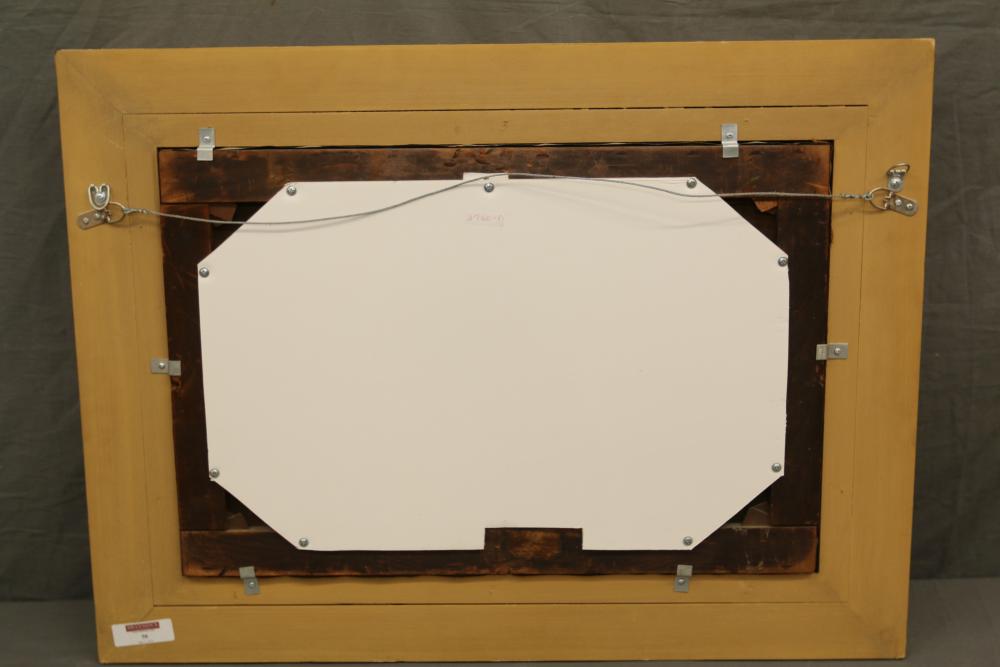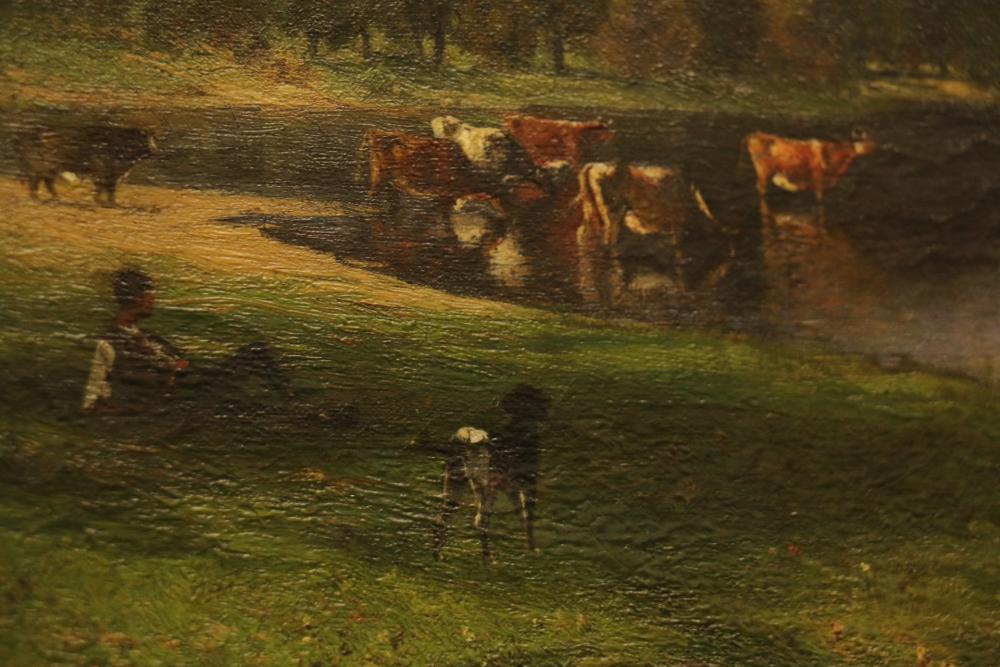Auctioneer's Note: The first American School of Art is known as ''The Hudson River School,'' consisting of mid-nineteenth century ''Nature Painters'' who found spirituality in nature. These adventuresome artists hiked to see impressive views. They sketched and did studies in the field to bring back to their studios where they would create the finished paintings. The Hudson River served as the main route of travel to the best places, as well as provided the best subject matter. New York City, with the National Academy of Design to exhibit at, was the center of the American Arts world in the 19thC. Now you can bid on 69 lots of paintings and prints, mostly related to the Hudson Valley. Today, with an emphasis on conservation of resources, and going ''Green,''it is the best time to purchase and enjoy these beautiful works. Bidding is online, with the opportunity to preview at the Absolute Auction Center. Every lot starts at $1.00 and sells to the highest bidder. Good luck! - Rob Doyle. Items located in Pleasant Valley, NY.
Payment is due by Thursday, February 27 at 1PM.
Pickup in Pleasant Valley, NY must be completed by Thursday, February 27 at 3PM.
All lots sold as is, where is. There is a 15% Buyers Premium for all lots purchased. Payment methods for non-vehicles & non-equipment include cash, MC, Visa, Discover or good check. Payment method for vehicles & equipment is cash, cashiers check, money order or wire transfer only, no exceptions. You can make credit card payment online by going to "My Account" and selecting your invoice.
Preview available Monday-Friday 9am-3pm by appointment only or online 24 hours. Use this link to get directions to the Absolute Auction Center: http://mapq.st/1wgg9jz
** NOTE: Shipping is available on all items with proper identification.**
Click More Info/Bid Now for additional photos.
Payment is due by Thursday, February 27 at 1PM.
Pickup in Pleasant Valley, NY must be completed by Thursday, February 27 at 3PM.
All lots sold as is, where is. There is a 15% Buyers Premium for all lots purchased. Payment methods for non-vehicles & non-equipment include cash, MC, Visa, Discover or good check. Payment method for vehicles & equipment is cash, cashiers check, money order or wire transfer only, no exceptions. You can make credit card payment online by going to "My Account" and selecting your invoice.
Preview available Monday-Friday 9am-3pm by appointment only or online 24 hours. Use this link to get directions to the Absolute Auction Center: http://mapq.st/1wgg9jz
** NOTE: Shipping is available on all items with proper identification.**
Click More Info/Bid Now for additional photos.
Auction Info
Auctioneer's Note: The first American School of Art is known as ''The Hudson River School,'' consisting of mid-nineteenth century ''Nature Painters'' who found spirituality in nature. These adventuresome artists hiked to see impressive views. They sketched and did studies in the field to bring back to their studios where they would create the finished paintings. The Hudson River served as the main route of travel to the best places, as well as provided the best subject matter. New York City, with the National Academy of Design to exhibit at, was the center of the American Arts world in the 19thC. Now you can bid on 69 lots of paintings and prints, mostly related to the Hudson Valley. Today, with an emphasis on conservation of resources, and going ''Green,''it is the best time to purchase and enjoy these beautiful works. Bidding is online, with the opportunity to preview at the Absolute Auction Center. Every lot starts at $1.00 and sells to the highest bidder. Good luck! - Rob Doyle. Items located in Pleasant Valley, NY.
Payment is due by Thursday, February 27 at 1PM.
Pickup in Pleasant Valley, NY must be completed by Thursday, February 27 at 3PM.
All lots sold as is, where is. There is a 15% Buyers Premium for all lots purchased. Payment methods for non-vehicles & non-equipment include cash, MC, Visa, Discover or good check. Payment method for vehicles & equipment is cash, cashiers check, money order or wire transfer only, no exceptions. You can make credit card payment online by going to "My Account" and selecting your invoice.
Preview available Monday-Friday 9am-3pm by appointment only or online 24 hours. Use this link to get directions to the Absolute Auction Center: http://mapq.st/1wgg9jz
** NOTE: Shipping is available on all items with proper identification.**
Click More Info/Bid Now for additional photos.
Payment is due by Thursday, February 27 at 1PM.
Pickup in Pleasant Valley, NY must be completed by Thursday, February 27 at 3PM.
All lots sold as is, where is. There is a 15% Buyers Premium for all lots purchased. Payment methods for non-vehicles & non-equipment include cash, MC, Visa, Discover or good check. Payment method for vehicles & equipment is cash, cashiers check, money order or wire transfer only, no exceptions. You can make credit card payment online by going to "My Account" and selecting your invoice.
Preview available Monday-Friday 9am-3pm by appointment only or online 24 hours. Use this link to get directions to the Absolute Auction Center: http://mapq.st/1wgg9jz
** NOTE: Shipping is available on all items with proper identification.**
Click More Info/Bid Now for additional photos.
Categories:
AskArt Bio: Alfred Cornelius Howland, a tonalist painter of light-filled, cheerful story-telling landscapes and genre scenes, was born in 1838 in Walpole, New Hampshire. In 1855, he graduated from Walpole Academy and then went to Boston, where he found employment as an engraver and studied drawing and lithography with Max Eppendorff and Paul Schulze.
In 1856, he moved to New York City where again he worked as an engraver and also took antique and life classes at the National Academy of Design.
In 1860, he began three years of study in Germany; a year was spent with Andreas Muller at the Dusseldorf Academy and a year and a half was in the Dusseldorf studio of Albert Flamm. Then Howland went to Paris, where he studied for two years with Emile Lambinet. He also met Barbizon painter Camille Corot, who introduced Howland to Barbizon painters Jean Francois Millet and Theodore Rousseau. Because of these influences, he adopted their tonalist style for the remainder of his career.
His penchant for friendship with well-known artists was exercised again with Winslow Homer and landscape painter Homer D. Martin when Howland eventually returned to America in 1864. In 1865, he became a teacher at Cooper Union and became active in the Artists Fund Society and the Century Association. He began participating in regular exhibitions at the National Academy of Design, gaining distinction as a full Academician and election to the Academy Council.
Howland married Clara Ward in Williamstown, Massachusetts, an area that became their summer home and where he frequently painted landscape scenes. Many of his plein-aire paintings depicted children at play, and it was said of him that he had such a cheerful, outgoing personality that children were readily impressed by him and willing to serve as models. He also painted on Long Island, and in Vermont, New Hampshire and upstate New York.
In later years, Howland spent time in California, where he died in 1909 in Pasadena. (His paintings have sold for as high as $35,250.)
His work is at the Layton Art Gallery, Milwaukee, Wisconsin, the Naval Academy, Annapolis, Maryland, and Yale University, New Haven, Connecticut.
More Details
AskArt Bio: Alfred Cornelius Howland, a tonalist painter of light-filled, cheerful story-telling landscapes and genre scenes, was born in 1838 in Walpole, New Hampshire. In 1855, he graduated from Walpole Academy and then went to Boston, where he found employment as an engraver and studied drawing and lithography with Max Eppendorff and Paul Schulze.
In 1856, he moved to New York City where again he worked as an engraver and also took antique and life classes at the National Academy of Design.
In 1860, he began three years of study in Germany; a year was spent with Andreas Muller at the Dusseldorf Academy and a year and a half was in the Dusseldorf studio of Albert Flamm. Then Howland went to Paris, where he studied for two years with Emile Lambinet. He also met Barbizon painter Camille Corot, who introduced Howland to Barbizon painters Jean Francois Millet and Theodore Rousseau. Because of these influences, he adopted their tonalist style for the remainder of his career.
His penchant for friendship with well-known artists was exercised again with Winslow Homer and landscape painter Homer D. Martin when Howland eventually returned to America in 1864. In 1865, he became a teacher at Cooper Union and became active in the Artists Fund Society and the Century Association. He began participating in regular exhibitions at the National Academy of Design, gaining distinction as a full Academician and election to the Academy Council.
Howland married Clara Ward in Williamstown, Massachusetts, an area that became their summer home and where he frequently painted landscape scenes. Many of his plein-aire paintings depicted children at play, and it was said of him that he had such a cheerful, outgoing personality that children were readily impressed by him and willing to serve as models. He also painted on Long Island, and in Vermont, New Hampshire and upstate New York.
In later years, Howland spent time in California, where he died in 1909 in Pasadena. (His paintings have sold for as high as $35,250.)
His work is at the Layton Art Gallery, Milwaukee, Wisconsin, the Naval Academy, Annapolis, Maryland, and Yale University, New Haven, Connecticut.
High Bid:
$13,400.00 – global2306
Auction Type: One Lot
Quantity: 1
Bidding has closed on this lot

